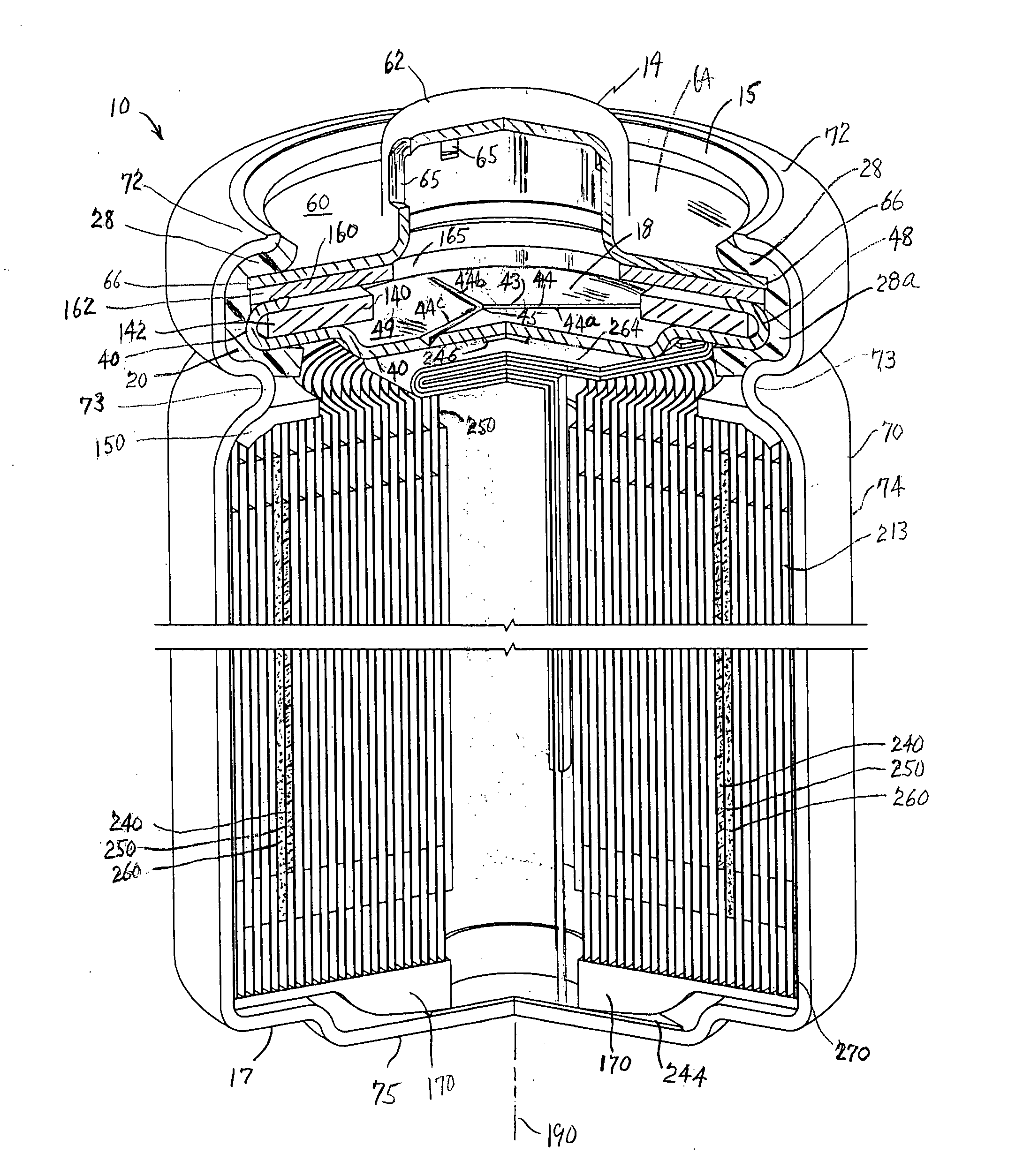End cap seal assembly for a lithium cell
- Summary
- Abstract
- Description
- Claims
- Application Information
AI Technical Summary
Benefits of technology
Problems solved by technology
Method used
Image
Examples
Embodiment Construction
[0042]The end cap assembly 14 of the invention has application to wound electrode cells. The principal application for end cap assembly 14 is for use in closing, sealing, providing a venting system, and an electrical safety cut off, for a cylindrical casing (housing) 70. End assembly 14 also provides an end terminal for the cell. The casing 70 may be of a standard cylindrical size AAA (44×10 mm), AA (50×14 mm), C (49×25.5 mm) or D (60×33 mm) or other cell sizes.
[0043]The end cap assembly 14 herein described is principally intended for lithium primary (non rechargeable) cells, that is, wherein the anode comprises lithium. The cell may typically have an anode 240 comprising a sheet of lithium and a cathode comprising a coating or layer 260 comprising manganese dioxide (MnO2) or iron disulfide (FeS2). Anode 240 can be an alloy of lithium and an alloy metal, for example, an alloy of lithium and aluminum. In such case the alloy metal, is present in very small quantity, preferably less th...
PUM
 Login to View More
Login to View More Abstract
Description
Claims
Application Information
 Login to View More
Login to View More - R&D
- Intellectual Property
- Life Sciences
- Materials
- Tech Scout
- Unparalleled Data Quality
- Higher Quality Content
- 60% Fewer Hallucinations
Browse by: Latest US Patents, China's latest patents, Technical Efficacy Thesaurus, Application Domain, Technology Topic, Popular Technical Reports.
© 2025 PatSnap. All rights reserved.Legal|Privacy policy|Modern Slavery Act Transparency Statement|Sitemap|About US| Contact US: help@patsnap.com



